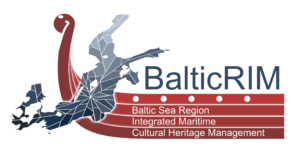BalticRIM Project: Baltic Sea Region Integrated Maritime Cultural Heritage Management (2017-2020)

The challenge
The cultural heritage of the Baltic Sea is exceptionally rich and – thanks to favourable environmental and climatic circumstances – also exceptionally well-preserved. With the ever-expanding economic use of coastal waters, however, underwater archaeological sites that have survived for centuries and even millennia are increasingly coming under threat. Our archaeological heritage is a non-renewable resource and requires special protection, which can be safeguarded only if it is included in sustainable management plans.

The project
The European Commission has recognised the necessity of such a sustainable management and explicitly includes ‘underwater cultural heritage’ in its Directive 2014/89/EU for integration in maritime spatial plans until March 2021. The BalticRIM-Project (acronym for: Baltic Sea Region Integrated Maritime Cultural Heritage Management) was set up for 2017-2020, thus just in time to help implement this directive. This project facilitates an exchange of ideas amongst experts from both the heritage protection and maritime spatial planning sector. Most Baltic Sea Region countries are involved, including Russia as the only non-EU member state.
The public benefit
A systematic integration of the underwater cultural heritage into maritime spatial planning not only benefits a long-term in situ preservation of archaeological sites for coming generations, but also offers possibilities for synergies with stakeholders with similar goals. Archaeological sites form part of a cultural landscape, often embedded in a natural environment. These sites are also popular destinations for tourists and recreational divers, offering economic benefits. Thus, a valorisation of underwater archaeological sites can help provide more points of interest for visitors and locals alike. Even when archaeological interests run counter to other uses, an identification of important archaeological areas provides developers with planning security at an early stage.
The planning process
Pilot case areas are designated for planning exercises by the partners in territorial waters and the Exclusive Economic Zones, several in cooperation with neighbouring states. These will be the first areas where the devised strategy shall be implemented in the maritime spatial plans. A special focus will be placed on some management areas, where cross-sectoral synergies with other stakeholders like nature protection agencies, diving federations or the tourism sector will be actively built. In order to align the points of departure in terms of data availability, partners will emphasise different points in the evaluation of the archaeological or cultural significance of coastal areas. Some mainly conduct a desk-based assessment, taking into account archaeological registers and research, but also historic records, old maps and other sources, whereas others plan to carry out dedicated fieldwork projects to fill gaps in the archaeological record.
The expected outcome
The short-term goal is to have zones of high archaeological or cultural significance be integrated in maritime spatial plans within the designated pilot case areas. This will be the first instance in which cultural assets are systematically integrated in top-level planning in the Baltic Sea. Aside from this tangible outcome, the long-term benefit will be the accumulated experience and apparatus created to integrate the underwater cultural heritage, also with a view to future planning.



